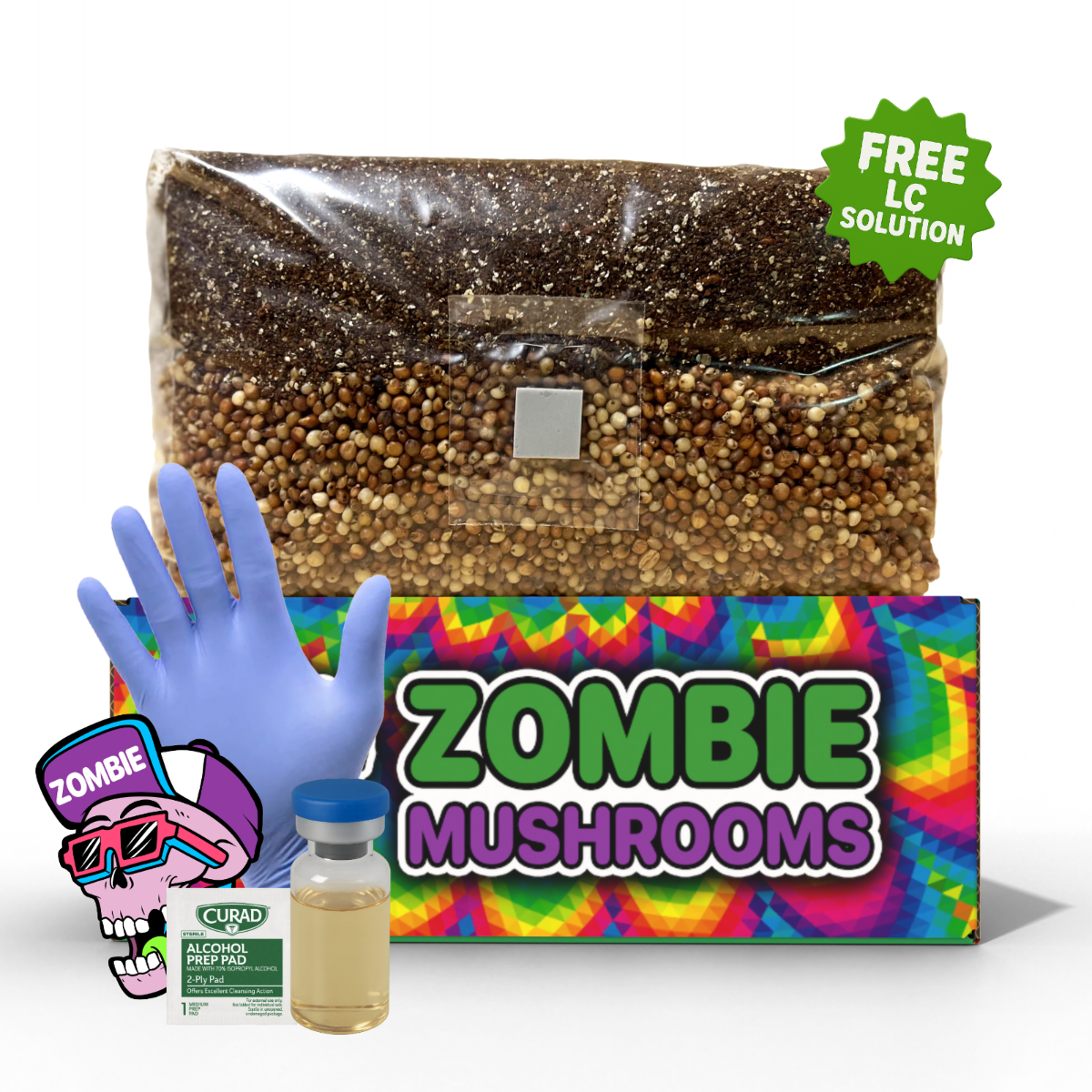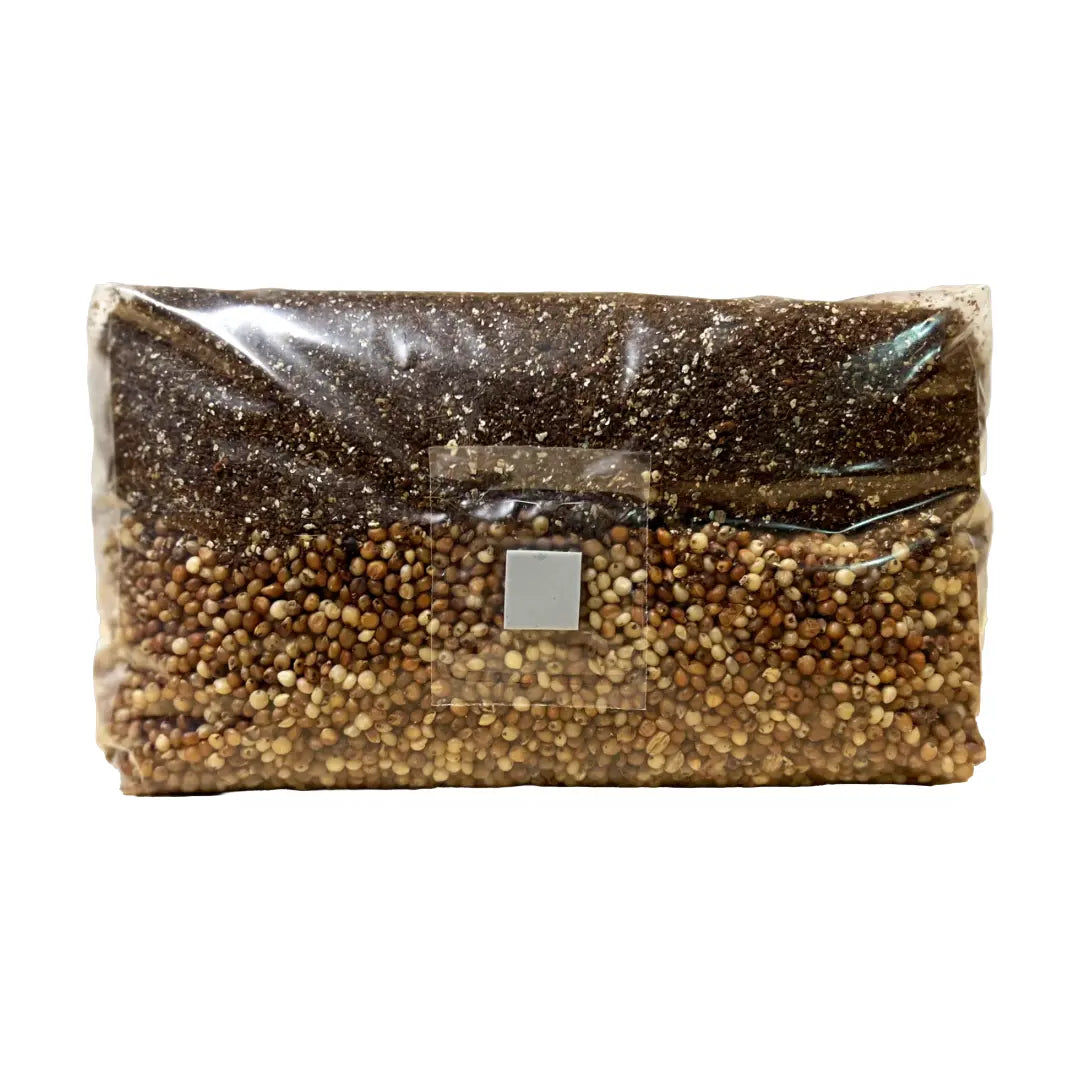- Maitake mushrooms can take 3–4 months to grow indoors and up to a year or more outdoors.
- Maitake prefer sterilized hardwood substrates like oak or maple enriched with bran.
- Fruiting is triggered by a temperature drop to 50–60°F and requires 85–95% humidity.
- Maitake cultivation offers high market potential due to their rarity and medicinal value.
- Research highlights maitake’s beta-glucans as immune-boosting and possibly antitumor.
Growing maitake mushrooms at home can be an exciting challenge with big rewards—both in taste and health. Maitake (Grifola frondosa) are celebrated for their complex flavor, rich texture, and powerful beta-glucans that support immune function. Whether you have space indoors or outdoors, following the right maitake cultivation steps makes a real difference. Using mushroom grow bags simplifies setup and helps maintain stable humidity and clean conditions. In this guide, you’ll learn everything—from substrate selection and environmental needs to troubleshooting and harvesting tips—to get strong maitake yields.
What Are Maitake Mushrooms?
Maitake mushrooms, also known as "Hen of the Woods," are a polypore fungus that grow at the base of hardwood trees, especially oak. These mushrooms are native to Japan, China, and North America and are highly valued both for their medicinal benefit and culinary versatility. Their name, "maitake," translates to "dancing mushroom" in Japanese, a nod to the stories surrounding their joyful discovery by ancient foragers.
Biologically referred to as Grifola frondosa, these mushrooms produce beautiful frond-like clusters that can grow quite large—sometimes over 50 pounds in wild settings. While naturally rare and seasonal, maitake mushrooms have gained prominence in both traditional medicine and gourmet cooking. They contain D-fraction, a unique form of beta-glucan polysaccharide with studied immunomodulatory and antitumor properties (Zhang et al., 2007). Furthermore, they are packed with flavor that enriches stir-fries, soups, and roasted dishes alike, making them one of the most sought-after species among fungi enthusiasts.

Why Grow Maitake Mushrooms?
Cultivating maitake mushrooms at home opens the door to a rare and rewarding experience. Here’s why putting your time into maitake mushroom growing is worth it
- Availability: Maitake are typically foraged in fall and rarely available fresh throughout the year, especially in rural or small-town areas.
- Nutritional and Medicinal Benefits: Packed with antioxidants, vitamins (B and D), and beta-glucans like the D-fraction, they're believed to help support healthy immune, cardiovascular, and endocrine systems.
- Economic Opportunities: Gourmet chefs and health-conscious consumers are willing to pay a premium for organically grown maitake mushrooms.
- Advanced Cultivation Skills: Unlike fast growers such as oysters, maitake offers a greater challenge for intermediate or expert growers looking to hone skills.
Maitake cultivation also fits various lifestyle agendas—whether you're interested in investing in homegrown superfoods, starting a sustainable micro-business, or going deeper into advanced mycology.

How Maitake Cultivation Differs from Shiitake and Oyster Mushrooms
Maitake mushrooms are often cultivated alongside other wood-loving fungi, but they behave quite differently. If you're experienced with shiitake or oyster varieties, here are the specific aspects that set maitake apart
- Colonization Time: Maitake mycelium colonizes substrates much slower—requiring up to four months to fully establish, unlike oyster mushrooms which colonize in 10–14 days.
- Stimulation Requirements: Oysters fruit easily under a wide range of conditions, but maitake often require environmental cues mimicking seasonal change: cold shocks, high humidity, and sometimes "physical" stimulation such as pressing or jarring the substrate block.
- Substrate Complexity: Maitake demands lignin-rich hardwood substrates—coffee grounds and straw (used for oyster mushrooms) are inadequate and often become contaminated.
- Environmental Sensitivity: Maintaining a steady balance of airflow, temperature, and humidity is more critical when it comes to maitake mushroom growing.
Understanding these differences is essential to mastering the unique needs of this high-value fungus. Successful maitake cultivation requires a more disciplined approach but offers unparalleled rewards.

Quick Start Guide: Grow Maitake Mushrooms at Home
Here’s a streamlined overview of what the process looks like when growing maitake
-
Choose Your Cultivation Method
- Beginner: Indoor grow kits (already colonized substrate blocks)
- Intermediate: DIY sterilized bags with grain spawn
- Advanced: Outdoor hardwood log inoculation
-
Select Your Environment
- Indoors: Controlled fruiting environment (grow tent or fruiting chamber)
- Outdoors: Shaded, moist, and cool area—near trees or north-facing sections of a yard
-
Gather Supplies
- Maitake grain spawn or plug spawn
- Fully sterilized hardwood sawdust blocks (or logs)
- Pressure cooker (for DIY sterilization)
- Humidity and temperature controllers
-
Cultivation Timeline
- Inoculation → Incubation (2–4 months)
- Fruiting Trigger (2–4 weeks after colonization)
- First Harvest (3–6 weeks after pinning)
If you’re a first-time grower, Zombie Mushrooms grow kits make the process straightforward.

Preparing Substrate: What Maitake Need to Thrive
-
Choose the Right Wood: Maitake mushrooms prefer hardwoods with high lignin content—oak, beech, maple, or elm are excellent. Softwoods should be avoided.
-
Enhance Nutrients: Add 5-10% nitrogen sources such as wheat or rice bran to sawdust substrate to boost yield and quality.
-
Moisture Target: Aim for 60-65% moisture. Test by squeezing a handful: only a few droplets should come out—no streaming water.
-
Use Filter-Patch Bags: Fill sterilized substrate into bags with breathable filter patches to reduce contamination risk.
-
Sterilization Matters: Sterilize substrate at 15 PSI for about 90 minutes using pressure cooker or autoclave to ensure clean start.

Inoculation & Incubation
Once your substrate is prepped, the next phase is inoculation—introducing maitake mushroom spawn into the sterile environment.
Indoor Grow Bag Method
- Use grain spawn for faster and more robust colonization.
- Maintain strict hygiene: work in a still-air box or near a flow hood.
- Mix grain spawn evenly into cooled sterile bags.
- Seal and store in incubation space.
Outdoor Log Method
- After drilling holes, fill each with spawn.
- Use beeswax or cheese wax to seal holes and log ends to retain moisture and keep out pests.
Incubation Conditions
- Temperature: 68–77°F (20–25°C)
- Humidity: 80–90%
- Light: Minimal or ambient light; direct sun can damage the mycelium
- Duration: Indoor: 10–16 weeks; Outdoor: 6–12 months
White, fluffy mycelium will gradually fill the sawdust or the log. Once fully colonized, you’re ready to start fruiting.

Fruiting Triggers & Conditions for Maitake Success
-
Temperature Drop: Mimic natural seasonal cues by lowering temps to 50-60°F (10-16°C) to initiate fruiting.
-
High Humidity: Maintain 85-95% humidity using humidifiers, misting, or wet perlite trays. Avoid dry air that stalls pinning.
-
Balanced Light Cycle: Provide 12 hours of indirect light / 12 hours dark using low-intensity LEDs or natural diffused light.
-
Air Exchange: Use passive airflow or filtered fans to reduce CO₂ accumulation. Proper ventilation encourages robust fruit body formation.
Growing Maitake Mushrooms Indoors: Tips and Tools
Cultivating indoors gives you better control over variables and a more predictable yield.
Preferred Setup
- Fruiting Chamber: Plastic tote with polyfill air holes or an indoor greenhouse tent.
- Humidification: Use a reptile fogger, ultrasonic humidifier, or trays filled with wet perlite.
- Monitoring: Equip the chamber with a hygrometer and thermometer.
- Air Flow: Small fans or cracked lids can help gas exchange.
Zombie Mushrooms kits conveniently supply colonized sawdust bags, which are ready to fruit upon arrival—take out the guesswork and invest in growing success.

Growing Outside: Maitake Log Cultivation
This method mimics maitake’s natural habitat and is ideal for sustainable production over multiple years.
Step-by-Step Outdoor Log Growing
- Cut logs in late winter for optimal nutrient retention.
- Allow logs to rest and "sweat out" antibacterial sap.
- Inoculate with plug spawn and seal all openings.
- Stack logs in shaded, humid environments—lean-to method or buried 1/3 in the earth.
- Water during dry periods to keep moisture levels up.
Unlike indoor setups, outdoor logs may require over a year before you see your first maitake fruiting. Once they begin, though, a single log can yield fruit annually for up to five years.

Timeline: How Long Does Maitake Take to Grow?
A breakdown of the life cycle can help set expectations
| Stage | Indoor Cultivation | Outdoor Log Cultivation |
|---|---|---|
| Spawn Run | 2–4 months | 6–12+ months |
| Fruiting Initiation | 1–2 weeks post trigger | Early to mid fall |
| Fruiting & Harvest | 3–6 weeks | Over 1–2 weeks |
| Total Timeline | ~3–5 months | 1–2 years |

Troubleshooting Signs & Success Indicators
Monitoring plant health is easy compared to fungi. Here's how to recognize maitake success or danger
Healthy Indicators
- Even, snowy mycelium throughout substrate
- Feather-like clusters (gray to brown) forming
- Pleasant earthy-mushroom aroma
Warning Signs
- Patches of green, black, or reddish mold
- Sour smell indicates bacterial infection
- Dry, shriveled primordia = humidity is too low
Prevent contamination by using clean water, sterilized tools, and fresh supplies for every step.
Key Tips for First-Time Maitake Growers
For your best chance at a productive grow
- Start with a kit to learn the basics with reduced risk.
- Stay sterile: Treat growing areas with alcohol and work in enclosed environments.
- Be consistent: Changes in humidity or temperature delay fruiting.
- Have patience: Maitake mushroom growing is not for those who are rushed; give it time and trust the process.

Harvesting and Storing Maitake Mushrooms
The reward is finally here—harvest carefully to maximize quality.
Harvesting
- Cut the cluster at the base with a sharp, sterile knife.
- Harvest when caps are firm but before they start to darken or crumble.
Storage & Preservation
- Refrigerate: Wrap in paper towels and store in a paper or mesh bag, lasting 7–10 days.
- Dehydrate: Slice and dry at low heat; can be rehydrated for months.
- Freeze: Cook first (sauté or blanch) to maintain texture, then freeze in airtight containers.
FAQ
-
How long does maitake take to grow at home?
Indoors: about 3–4 months from inoculation to first harvest. Outdoors (logs): it can take 6-12+ months, depending on conditions. -
Can I grow maitake mushrooms with grow bags?
Yes. Using grow bags with sterilized hardwood sawdust spawn speeds up the process and avoids many environmental challenges. -
What woods are best for maitake mushrooms?
Hardwoods like oak, beech, maple, and elm are ideal due to higher lignin content and better durability. -
What environmental cues trigger maitake fruiting?
Key triggers include a temperature drop (to ~50-60°F / 10-16°C), increased humidity, light cycle changes, and clean fresh air exchange. -
How to harvest maitake correctly?
Cut the mature cluster at its base with a sharp, sterile knife. Harvest before edges begin to darken or crumble to maintain texture. Store fresh mushrooms in paper bags in the fridge or dehydrate for preservation.
Wrapping Up: Why Maitake is Worth Growing
Mastering maitake cultivation provides a deep sense of accomplishment, not to mention access to premium mushrooms known for their medicinal benefits and culinary excellence. From log inoculation projects in your backyard to high-humidity grow tents in a basement, learning how to grow maitake mushrooms opens a new level of mycological artistry.
Zombie Mushrooms offers everything you need to get started, whether you're a hobbyist or a future mushroom entrepreneur. With the right techniques, tools, and patience, maitake mushroom growing can become a lasting, fruitful endeavor.
References
- Zhang, M., Cui, S. W., Cheung, P. C., & Wang, Q. (2007). Antitumor polysaccharides from mushrooms: A review on their isolation process, structural characteristics and antitumor activity. Trends in Food Science & Technology, 18(1), 4–19. https://doi.org/10.1016/j.tifs.2006.07.013
- Royse, D. J. (2010). Cultivation of edible and medicinal mushrooms on lignocellulosic wastes. International Journal of Medicinal Mushrooms, 12(3), 241–256. https://doi.org/10.1615/IntJMedMushr.v12.i3.70



